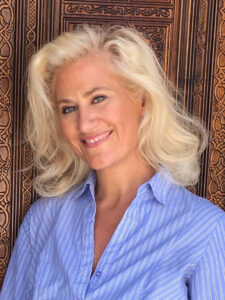An Introduction to Subtraction
Healing is often seen as an active process, something we must do—and do perfectly—in order to get better. If you’re here, reading this, it’s likely that you have already spent a great deal of time searching, learning, and applying different tools to support your healing. You’ve probably tried countless approaches, hoping that if you just find the right one, everything will finally click into place.
But what if healing isn’t about adding more? What if it’s about doing less?
There’s a natural resistance to this idea. After all, when you’re struggling with symptoms, stopping can feel like giving up. Doing less might seem counterintuitive — maybe even dangerous. But this healing journey isn’t something we can force.
Sometimes, what we subtract is just as important as what we add. Perhaps it’s time to notice where effort has become strain, where healing has turned into another stressor, and where it’s time to let go.
Pause here and take a deep breath. Hold it for the count of 1,2,3 seconds. Then release it all at once with a sighing sound to signal safety to your nervous system.
Alice in Wonderland
“Don’t just stand there, DO something!”
This is a quotation from Alice in Wonderland.
In our culture, we want to be “doing” instead of “being”, or in this case instead of just standing there.

At this point in the healing journey, it can be helpful to consider swapping it around:
“Don’t just DO something, stand there!”
The DOINGNESS approach of our culture applies to our approach to healing.
“What can I DO to get better?” we think.
When we are in recovery from a chronic condition, this shows up as wanting to add things, and then add more, and then more. We want to “do” the stuff to “get better” – it feels familiar and therefore comforting to be proactive.
And the things we do are not bad, from wake-up affirmation mantras to breathing exercises to new bedtime rituals: it’s all great.
However, when we have a “to do” list like this, it adds stress.
And stress adds another layer to the burden of stressors you are already carrying, which leads to more symptoms.
So it can be a really good idea to look at what to SUBTRACT.
So here are some suggestions for you to consider. Let’s see if you can think about what you can remove from your life.
(Notice your resistance to this idea. Thoughts like “but I am not doing that much” might pop up)
What to Stop
Stop waiting for symptoms to disappear
This is the hardest thing you have ever been through in your life. You were probably told to rest and wait for your body to heal, and that your symptoms would then go away. It didn’t work. Now you are learning that it is necessary to do things towards recovery even with symptoms.
Stop symptom checking
Perhaps you decide what to do each day by how you feel, depending on what you notice in the morning. It has become a habit – you wake up and you check your symptoms. By doing this, you are creating neural pathways to reinforce and grow the pain and discomfort of symptoms. It is time to create new neural pathways that are full of joy and peace. You can turn your attention away from these wake-up thoughts and soon the habit will evaporate.
Stop Trying to “Fix” Yourself
Many people on a healing journey feel broken. They believe they need to be fixed. But the truth is, your body isn’t broken—it is responding to stress, fear, and past patterns. Healing isn’t about forcing yourself into wellness. It’s about learning to work with your body, rather than treating it like something that needs to be repaired. Try shifting your mindset from “I need to fix this” to “I am creating a safe space for my body to restore itself.”
Stop obsessively searching
We need to give treatments a fair chance. You might already have planned the next treatment while you are still doing this one. That means you don’t believe it will work. So you end up spending a lot of money on many different things while you remain in the Fight, Flight, Freeze mode. Can you stop searching?
Stop worrying about other people
You don’t have to explain yourself or anything to anybody. You don’t have to justify why you are exhausted or why you have symptoms to anybody. It’s a waste of your energy and time (they cannot understand), and it is adding stress to you.
Stop Over-Explaining Your Illness to Others
If you’ve been chronically ill, you may feel the need to explain yourself constantly—to friends, family, even strangers. But over-explaining can be exhausting, and not everyone will understand.
You don’t owe anyone an explanation. You are allowed to set boundaries and protect your energy. Instead of justifying your symptoms, try saying: “I’m focusing on my healing right now, and I appreciate your support.”
Stop Rushing
Whenever you rush, you are not cultivating the peace you need to create to go into Rest and Digest mode, to come out of Fight, Flight, Freeze. Rushing doesn’t create those joyous neural pathways we want. Hurrying creates stress and turns away from joy. This is the old way of living. Don’t panic if later in your recovery journey you get late occasionally and have to rush to something. It’s okay at a certain point in your recovery, but it needs to be just once in a while, not a lifestyle.
Stop being Perfect
It’s a journey to come out of perfectionism. We are working on it, so don’t worry as soon you will be a lot more happy and a lot less hard on yourself. You don’t need to ignore your own perfectionism. Notice it. Awareness helps us then create change 💗
Stop Identifying With Your Symptoms
This one can be tricky. When you’ve been in pain or dealing with illness for a long time, it can become part of your identity. You might catch yourself thinking, “I am someone who is sick.” But you are so much more than your symptoms.
This process isn’t about denying what you’re going through — it’s about expanding your identity beyond it. Try this shift: Instead of “I am sick,” try “I am in a process of healing.”

The Cultural Pressure to Always "Fix" Ourselves
We live in a world that worships effort and achievement. From the time we are young, we are taught that more is always better — more productivity, more progress, more solutions. The underlying message? If we’re not constantly improving ourselves, we are somehow failing.
This belief seeps into our approach to healing. Instead of allowing ourselves to be, we feel the pressure to do:
- More research (Maybe I just haven’t found the right answer yet…)
- More practices (Maybe I just need to add one more tool to my routine…)
- More fixing (Maybe I just need to work harder to heal…)
But rewiring the brain and nervous system doesn’t happen through effort—it happens through safety and surrender. When we chase healing like an achievement, we reinforce the very neural pathways that keep us stuck in chronic symptoms. Chronic conditions are built on a foundation of these deeply conditioned stress responses that have become wired into the brain and body.
The more we treat healing like something to achieve, the more we unknowingly signal to the brain that we are in danger, keeping it in a fight-flight-freeze cycle. Recovery is not about working harder—it’s about teaching the brain that it is safe enough to let go of pain and symptoms.
True healing asks us to step out of the fixing mindset and into something deeper: trust.
This doesn’t mean giving up—it means recognising that healing isn’t a test you have to pass. It’s a process that unfolds when the brain and body feel safe enough to change. Neuroplasticity—the brain’s ability to rewire pain and fear pathways—is only possible when we stop reinforcing danger signals and begin building new, healthier patterns.
It’s not the daily increase but daily decrease. Hack away at the unessential.
Bruce Lee
A Quick Note on Safety
Letting go can feel unsettling at first.
For many people, control feels like safety—whether that’s through researching, monitoring symptoms, or sticking to rigid healing routines. Doing something (anything!) feels productive, like a way to hold onto hope. But when the brain is stuck in hypervigilance, constantly scanning for symptoms or searching for the “right” healing approach, it actually reinforces the TMS pain cycle.
So the idea of subtracting—of doing less—might stir up feelings of fear, uncertainty, or even guilt.
That’s okay. This isn’t about forcing yourself to stop anything before you’re ready. Instead, consider this an invitation to soften—to look at what is truly serving you and what is simply keeping your nervous system and brain stuck in old fear patterns.
Healing isn’t about proving anything. You are not in a race. There is no finish line to cross.
Take a breath. There is nothing you need to fix right now.
You are allowed to do less. And in doing less, you might just find that your brain and body finally have the space to begin rewiring — creating new neural pathways that support ease, safety, and healing.
The Brain’s Role: From Stress to Safety
If you’ve been living with chronic symptoms, it’s likely that your nervous system and brain have been stuck in a chronic stress response for a long time. This isn’t something you’re doing wrong—it’s simply how the brain works when it has been conditioned to perceive danger.
TMS (The Mindbody Syndrome) is not just about pain—it’s about how unresolved stress, fear, and emotional patterns create neural pathways that reinforce symptoms. The brain wires itself based on what we focus on the most. When we constantly check symptoms, search for solutions, or operate from a place of urgency, we are unknowingly reinforcing the very patterns that keep the nervous system dysregulated.
Let’s break this down:
- The Fight-Flight-Freeze system is designed to protect you. When the brain perceives a threat—whether that’s physical danger or emotional stress—it shifts into survival mode.
- This state increases pain sensitivity, fuels anxiety, and keeps the body tense. If the brain believes symptoms are a threat, it keeps them active.
- Healing happens when we shift out of Fight-Flight-Freeze and into Rest and Digest mode—where the body can finally relax and rewire.
- Doing less isn’t about giving up—it’s about allowing the brain to finally feel safe enough to change.
TMS healing is not about fighting symptoms or forcing belief shifts—it’s about creating a safe internal environment where the brain can let go of fear-based patterns and begin to rewire.
What Happens When You Start Letting Go?
At first, it might feel strange or even uncomfortable to slow down.
When you’ve spent months or years in a state of urgency—monitoring symptoms, searching for answers, and trying to fix everything—stopping can feel unsafe. This is because your brain has been wired to associate “doing” with survival.
- Fear might come up—because slowing down used to feel unsafe.
- You might feel restless—like your mind is still searching for something to fix.
- You might even feel like you’re not doing enough.
But over time, these shifts create new neural pathways—pathways that support ease, safety, and healing.
Imagine you’ve been sprinting for years, and suddenly, someone asks you to sit down and rest.
At first, your body might still feel like it’s moving at high speed, even though you’re now still. That’s normal. The nervous system doesn’t shift instantly—it takes time for the brain to adjust to safety.
By choosing one healing path and subtracting unnecessary stress, you are giving your brain and body the space they need to rewire toward ease instead of urgency, toward healing instead of fear.
This process happens gradually. Be kind to yourself as you adjust. Healing is not about pushing harder — it’s about creating the right conditions for your body, mind and heart to heal.
This journey is about stepping out of stress and into trust. You don’t have to figure it all out at once, but choosing to shift your focus, release unhelpful habits, and gently guide your brain toward safety makes all the difference. There is nothing to prove. There is no perfect way to heal. You are already moving forward, simply by being here.
Amari's Perspective: Finding Balance
I know how easy it is to get caught in the cycle of constantly searching, refining, and adding more to your healing routine. I’ve been there too — believing that if I just found the perfect method, the missing piece, everything would fall into place.
But the truth is, healing isn’t about collecting more strategies — it’s about creating the right conditions for your body and mind to rewire. And sometimes, that means doing less, not more.
This doesn’t mean stopping everything. It doesn’t mean ignoring tools that help or letting go of the practices that bring you comfort. It means shifting the focus from fixing to allowing, from urgency to trust.
It’s about recognising that you don’t have to carry the entire weight of healing on your shoulders. Your brain and body are already designed to restore themselves — you need some space for the process to unfold.
If you feel overwhelmed, take a breath. You are not failing because you haven’t healed yet. This is a journey, and every small shift — every moment of rest, every choice to step back from stress — matters.
Next Steps: Where to Go From Here
If you’re ready to explore this idea further, here are a few supportive next steps:
✨ Explore more resources: Visit the Healing Support Resources section for more articles and practices on nervous system regulation, belief shifts, and mindbody healing.
🌿 Try a guided practice: If you’d like to experience a shift in real-time, my EFT practice for reducing fear and anxiety on the blog is a great place to start.
💗 Book a session: If this resonates but feels overwhelming to navigate alone, I’d love to support you. You don’t have to figure this out on your own. Learn more about my one-to-one sessions and how we can work together.
That brings us to the bottom of the page. You made it! 💗
This is a lot to take in, and that’s okay. You don’t have to do everything at once. Maybe just pause here, take a breath, and let these ideas settle.
Whenever you’re ready, I’m here to support you. And until then…
I am glad you are here.
💗 ooh! Is that a cup of tea you are manifesting? Or perhaps a little bit of extra kindness for yourself today? 💗














